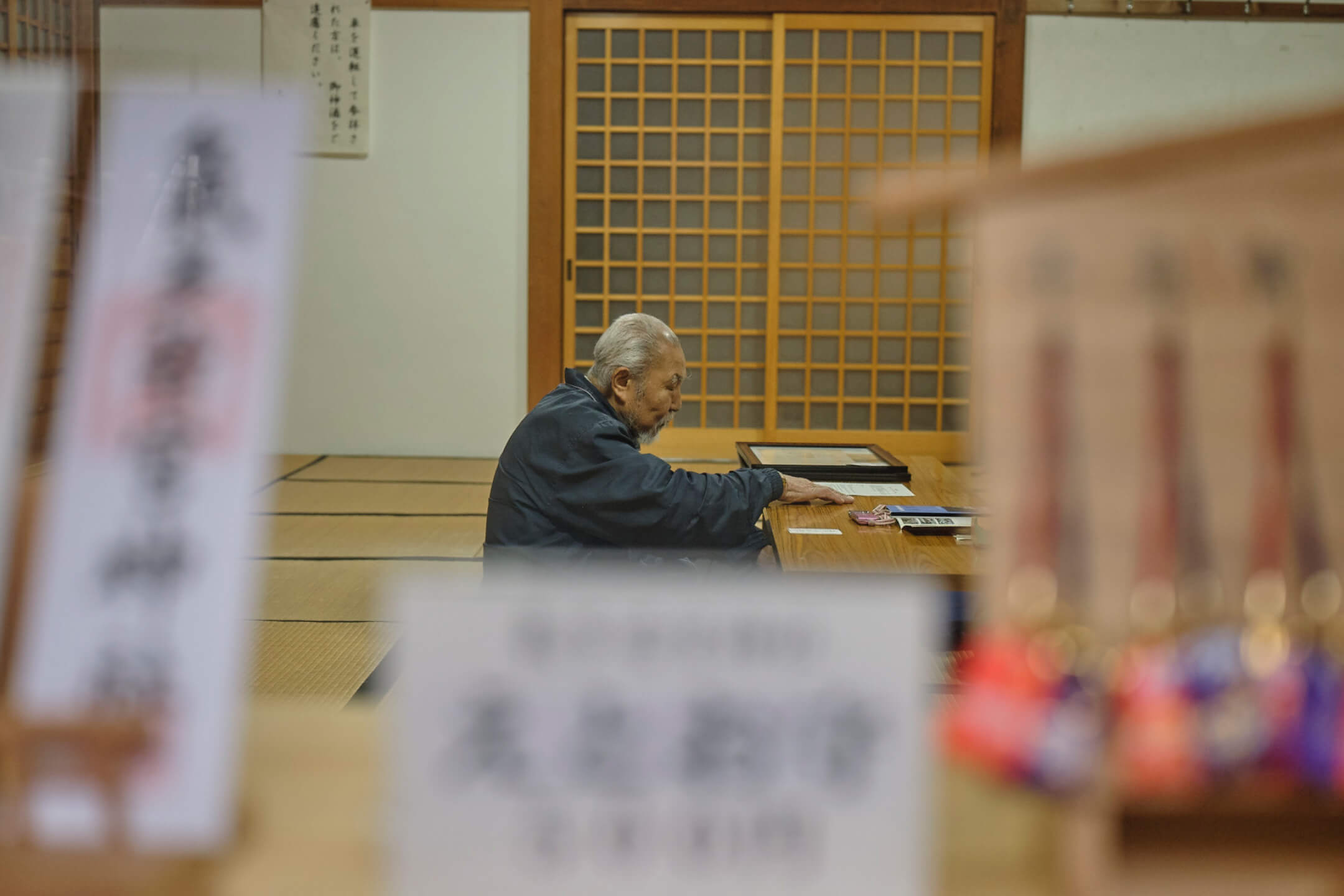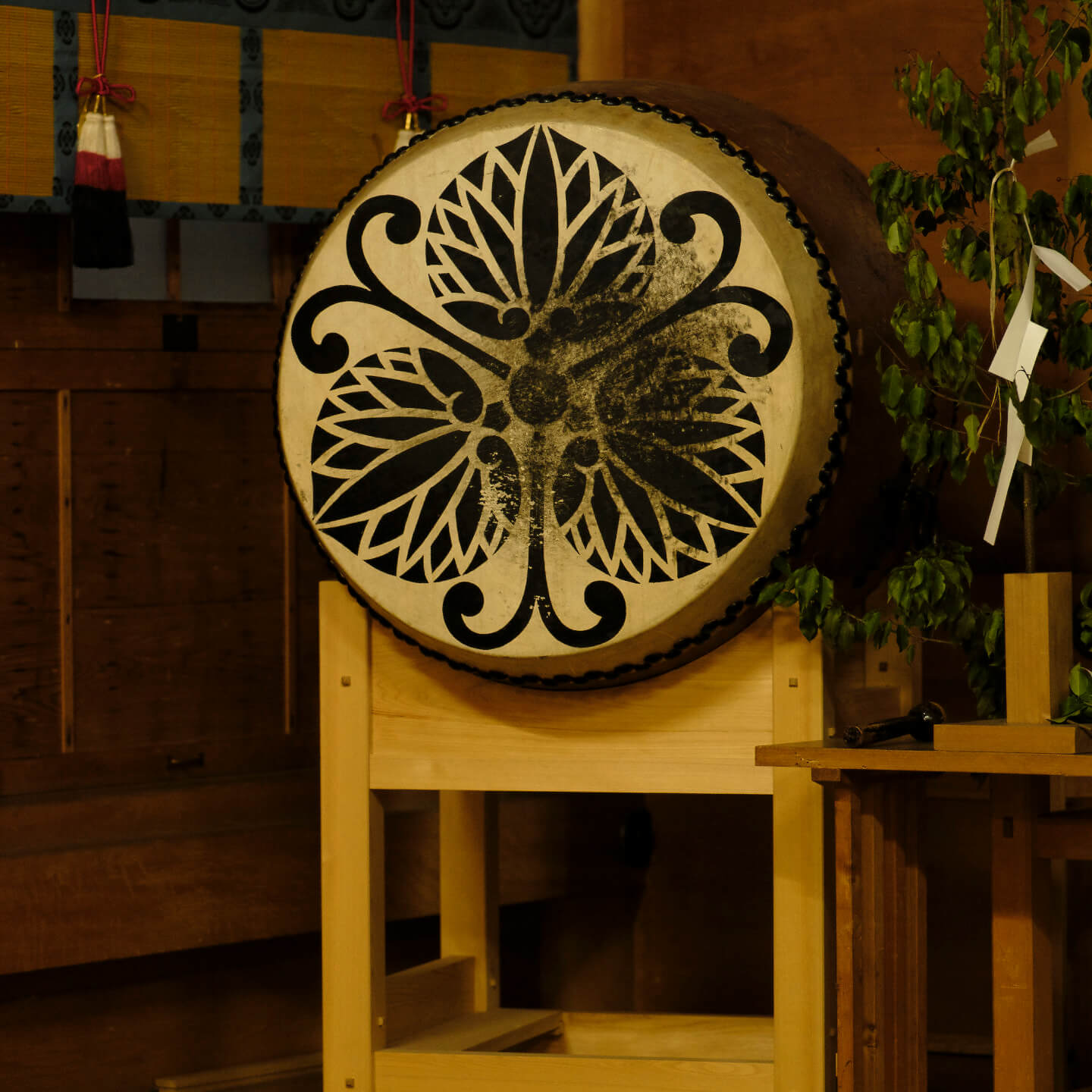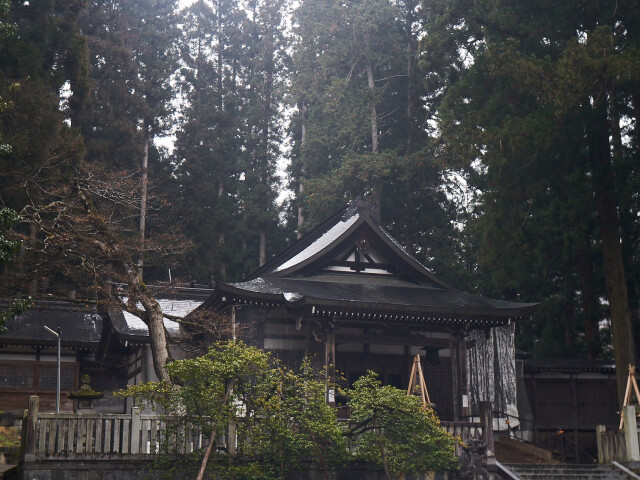Journal Vol.9
Makoto Amaki (Chief Priest, Ketawakamiya Shrine)
The spirit of ujiko (shrine parishioners) is not something that can be described by one word.
Upon a hill on the north side of the JR Hida-Furukawa station sits the Ketawakamiya Shrine, overlooking the town of Furukawa. Its annual event held on April 19 and 20 is the Furukawa Festival. Makoto Amaki, chief priest of the shrine, serves as a witness to the lottery held on the first Sunday of March ahead of the festival. During the festival, he performs Shinto rituals in the main hall of the shrine and offers prayers at various locations in the town.
The Furukawa Festival is an annual event of the Ketawakamiya Shrine. It all started when parishioners discussed and decided to let their guardian deity stay over once in a while, as they felt sorry for keeping it cooped up inside the shrine all year round. So, they built an otabisho, a resting place for the deity, in the town and the festival started as an event designed to take the deity to the otabisho.

In the morning of April 19, the day on which the Shigakusai is held, a ritual is held in the main hall of the shrine to pray for parishioners, Hida City, and Gifu Prefecture, as well as for the peace and safety of Japan and the world. After that, parishioners, carrying the deity in the mikoshi (portable shrine), head for the inner town and take the deity to the otabisho. On the next day, April 20, we have the Hongakusai, the main festival. So, we beat the Okoshi-Daiko (rousing drum) the night before to wake up parishioners in the town for the big event. In the Hongakusai, the spirit of the deity takes possession of the mikoshi, which is carried around in the town before returning to the shrine.

Those serving in leadership roles in yatai float groups and Okoshi-Daiko teams are determined by drawing lots on the first Sunday of March, and the festival is carried out under their leadership. The procession of the mikoshi carrying the deity to the otabisho and around the town where parishioners reside is the main event of the festival, while the accompanying procession and gathering of yatai floats are meant to be an offering from parishioners to the deity. Yatai float groups and Okoshi-Daiko teams are autonomous neighborhood associations.

With rural regions across the country facing a declining population, some traditional festivals might have been or will be discontinued. Despite all the odds, the Furukawa Festival has been carried on thanks to the efforts of parishioners who, based on consensus reached through discussion, have made various changes to the festival where necessary to adapt to the changing needs of times while keeping the essence of the festival unchanged. For instance, the turret for the Okoshi-Daiko used to be carried over people’s shoulders. Today, it is carried on the wheels. The rolling chassis of a Nissan Bluebird car, donated by the owner of a car repair company, has been set into the frame of the turret to wheel it. By switching from carrying to wheeling, it became easier to move the turret forward even with a smaller number of participants. It also reduced wear and tear on the turret.
It may not get across to tourists, but parishioners put their hearts and souls into the Furukawa Festival because they have their respect and gratitude for their guarding deity deeply rooted in themselves. So, when you come here for the festival, I would like you to try to understand the spirit of those parishioners as you see it.
Text by Minako Hoshikawa / Photo by Naoto Hayasaka [Y’s C]

1297 Kamikita, Furukawa-cho, Hida-shi, Gifu Prefecture / Phone: 0577-73-2568
The year of foundation is unknown. It enshrines Onamuchi (also known as Okuninushi-no-Kami), a god of nation-building, farming, business, and medicine, and Mii-no-Kami, a god of trees, water, and easy birth. It has always been a sacred place for locals, where they say they feel a spiritual force. More recently, it has become a popular tourist spot attracting many visitors from within and outside Japan, as it was used as a setting for Kimi no Na wa [Your Name], a successful animation film directed by Makoto Shinkai. The shrine is located on a hill looking over the town of Furukawa, about 15 minutes on foot from the JR Hida-Furukawa station.
[Related link] *New window opens.
– Ketawakamiya Shrine